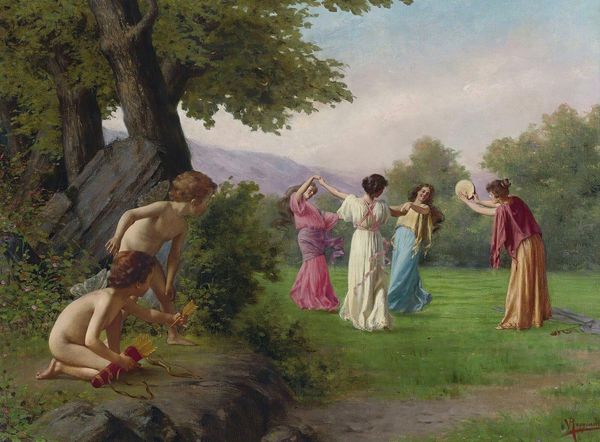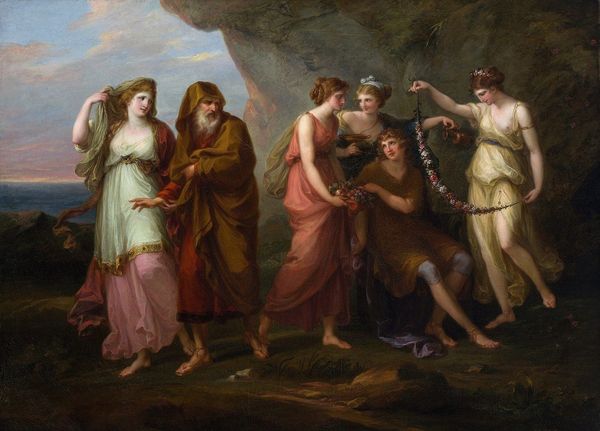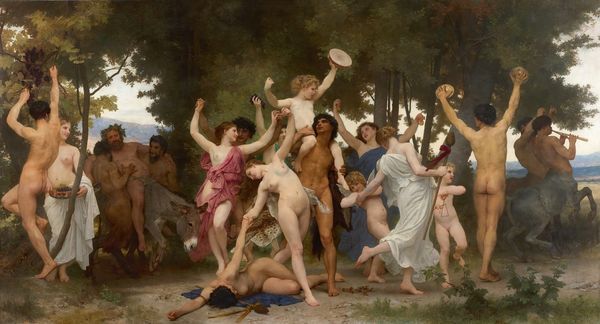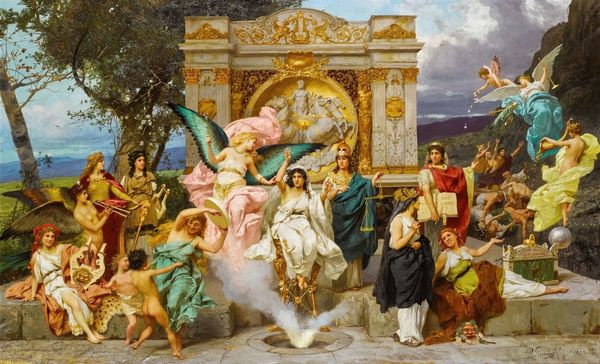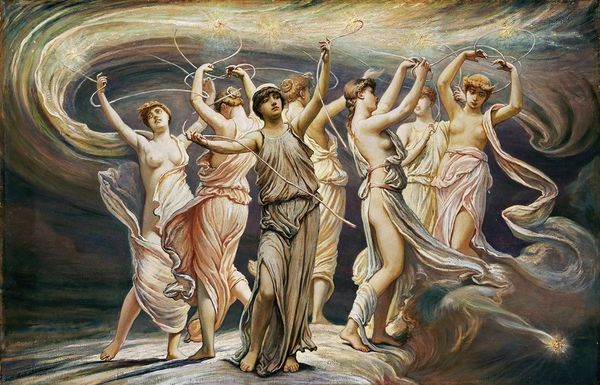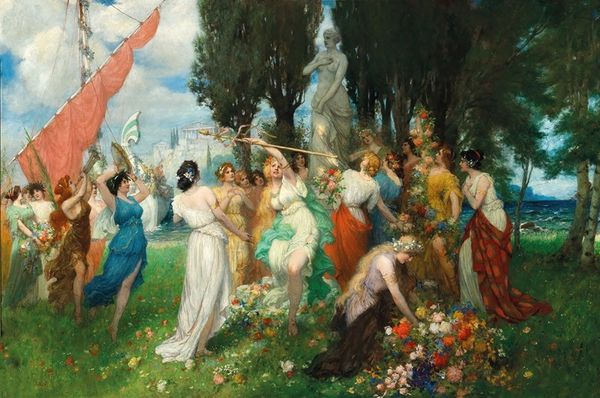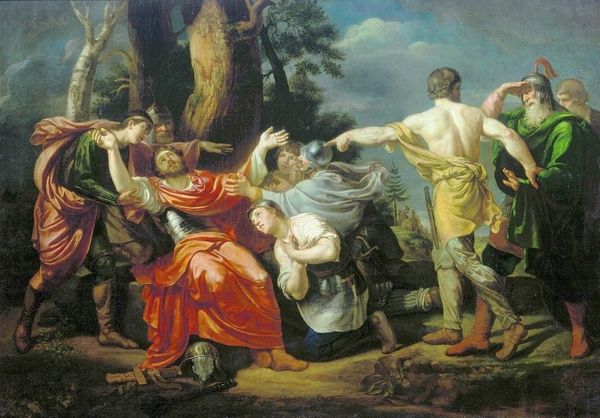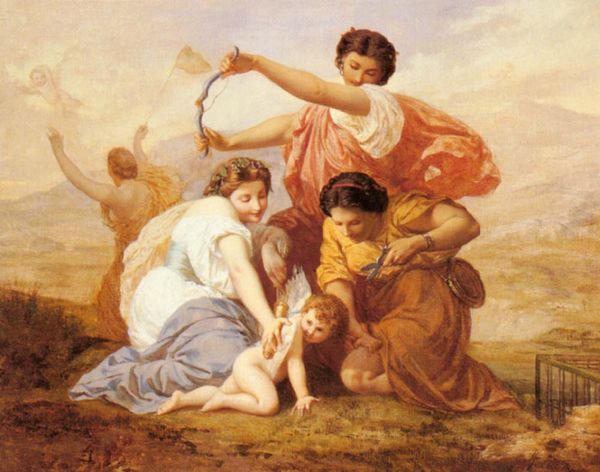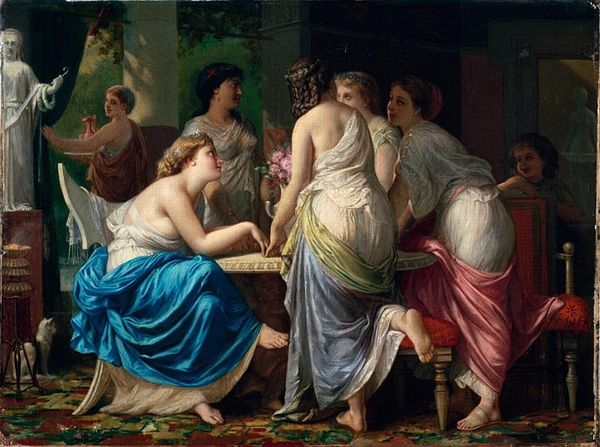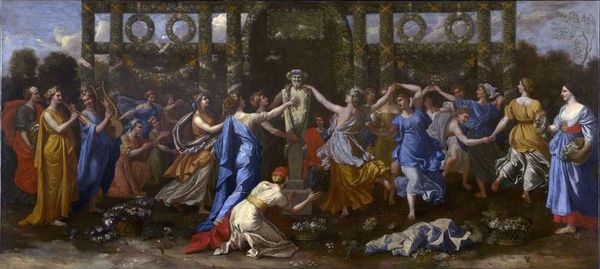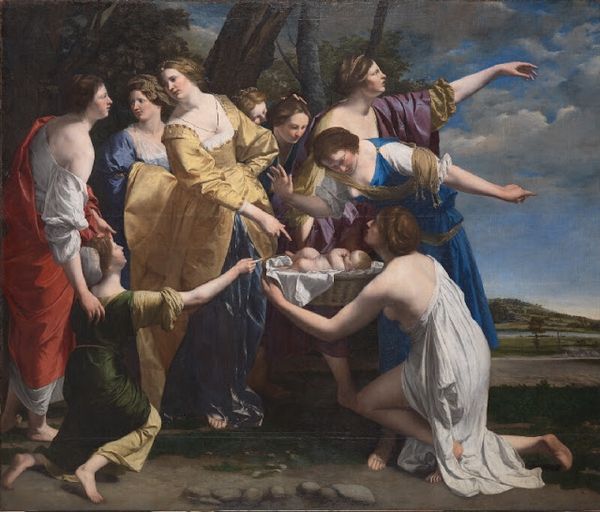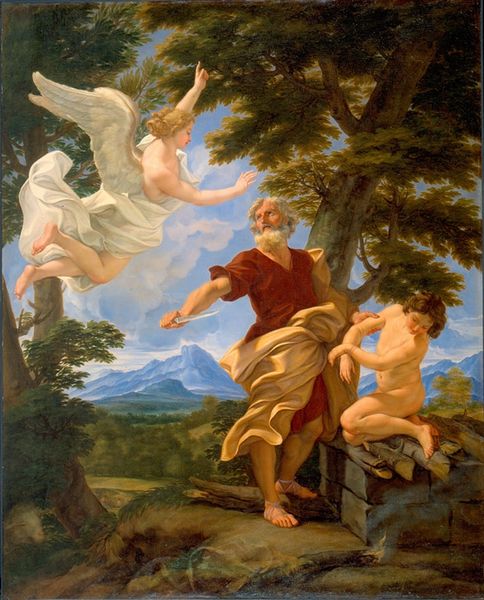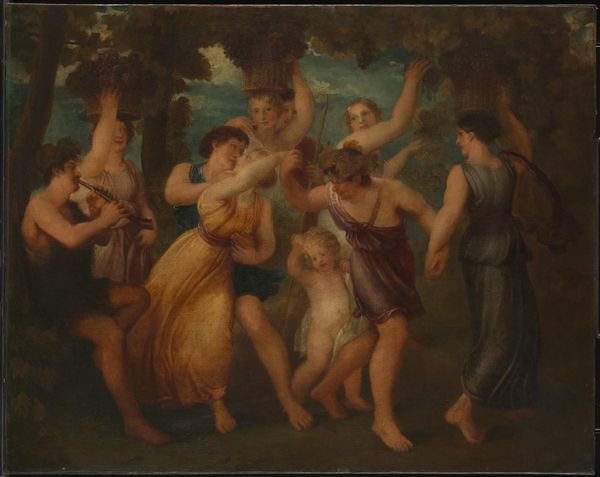
painting, oil-paint
#
allegory
#
neoclassicism
#
painting
#
oil-paint
#
greek-and-roman-art
#
landscape
#
figuration
#
oil painting
#
mythology
#
genre-painting
#
history-painting
#
academic-art
Dimensions: 234.5 x 92 cm
Copyright: Public domain
Curator: This is "Horae Serenae", painted by Edward John Poynter in 1894. It's an oil on canvas that encapsulates a fascination with classical antiquity pervasive during the late 19th century. Editor: Oh, it's like stepping into a dream of ancient Greece. The colors are so soft, almost faded, giving it a sense of timelessness. But there's also a palpable energy; those women dancing in the sunlight feel utterly alive. Curator: Precisely. Poynter was a leading figure in the academic art world, even serving as president of the Royal Academy. He drew heavily from historical and mythological subjects, imbuing them with an idealized aesthetic, intended to reflect the order and serenity believed to characterize classical civilizations. Editor: It’s fascinating how he contrasts the carefree revelry of the dancers with the more contemplative figures reclining under the pergolas on either side. Like, the party is in full swing but also suggests there’s a quieter, perhaps more profound, side to existence happening just off-center. Do you feel it? Curator: I think what you're picking up on relates to Poynter's interest in exploring the intersection of public and private life in classical societies. The juxtaposition hints at social structures, leisure activities, and idealized roles for women in that historical context. Remember that images like this played into larger Victorian societal desires and nostalgia. Editor: I guess…But for me, it's the peacocks that cinch it! They add this wild, untamed beauty, like nature gate-crashing an otherwise very orchestrated scene. A glimpse of vibrant chaos amidst the calm. And a bit tongue in cheek, no? I sense a glint of mischievousness in this supposedly serious academic piece! Curator: An interesting point! I see it as symbolic. The peacocks maybe evoke luxury, status, and even allusions to the goddesses Hera or Juno in the broader narrative of classical imagery and values circulating through art production in the 1890's. Editor: Well, whether the peacocks are slyly commenting or contributing to the intended message, they certainly lend "Horae Serenae" an enduring enigmatic quality. A sun-drenched dance of historical charm and personal interpretation. Curator: Indeed, it serves as a reminder of how artists engage with the past to construct their present, inviting endless opportunities for analysis.
Comments
No comments
Be the first to comment and join the conversation on the ultimate creative platform.
